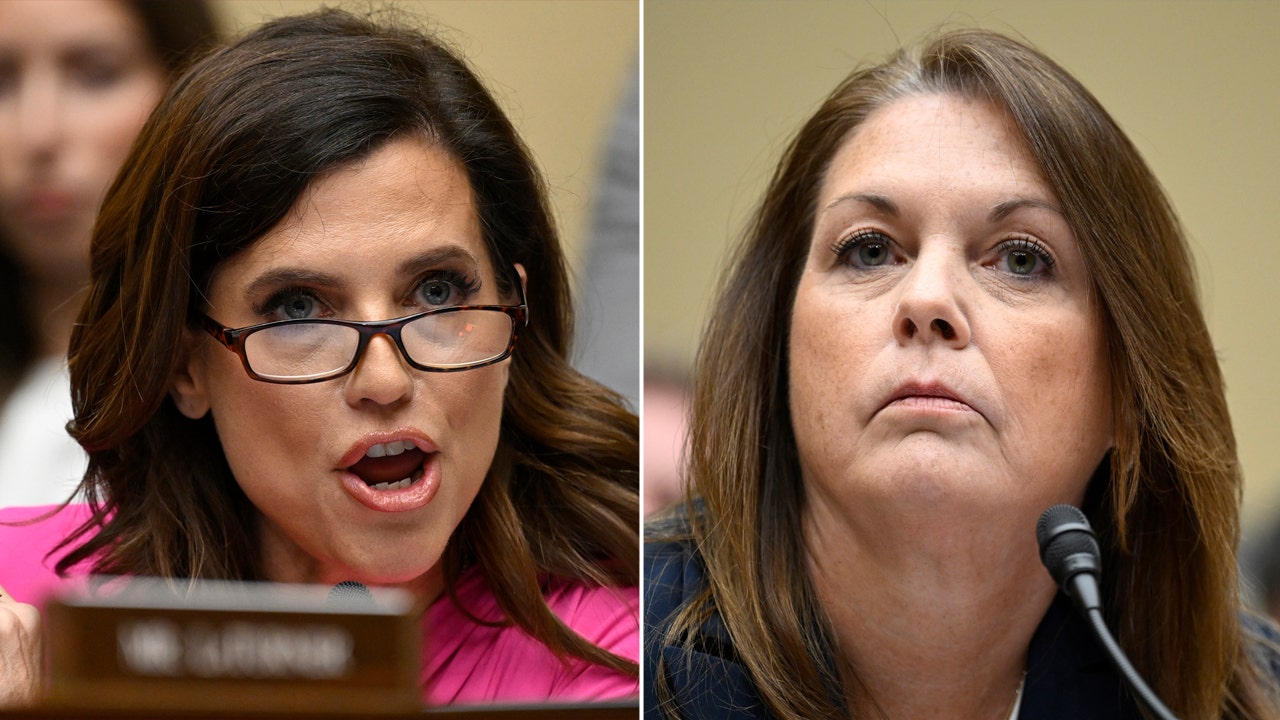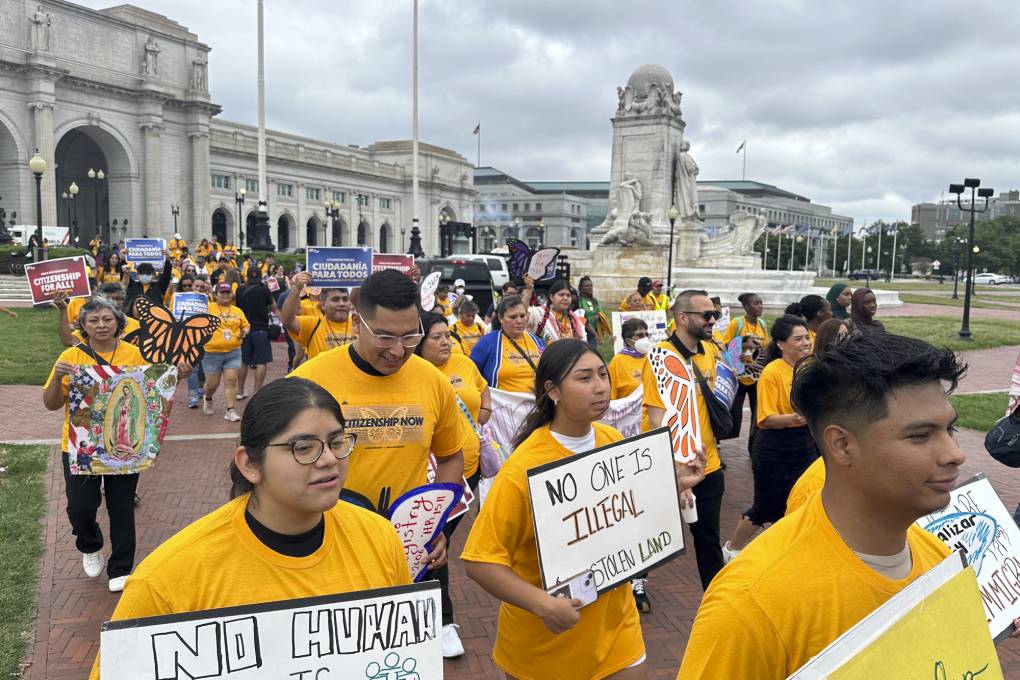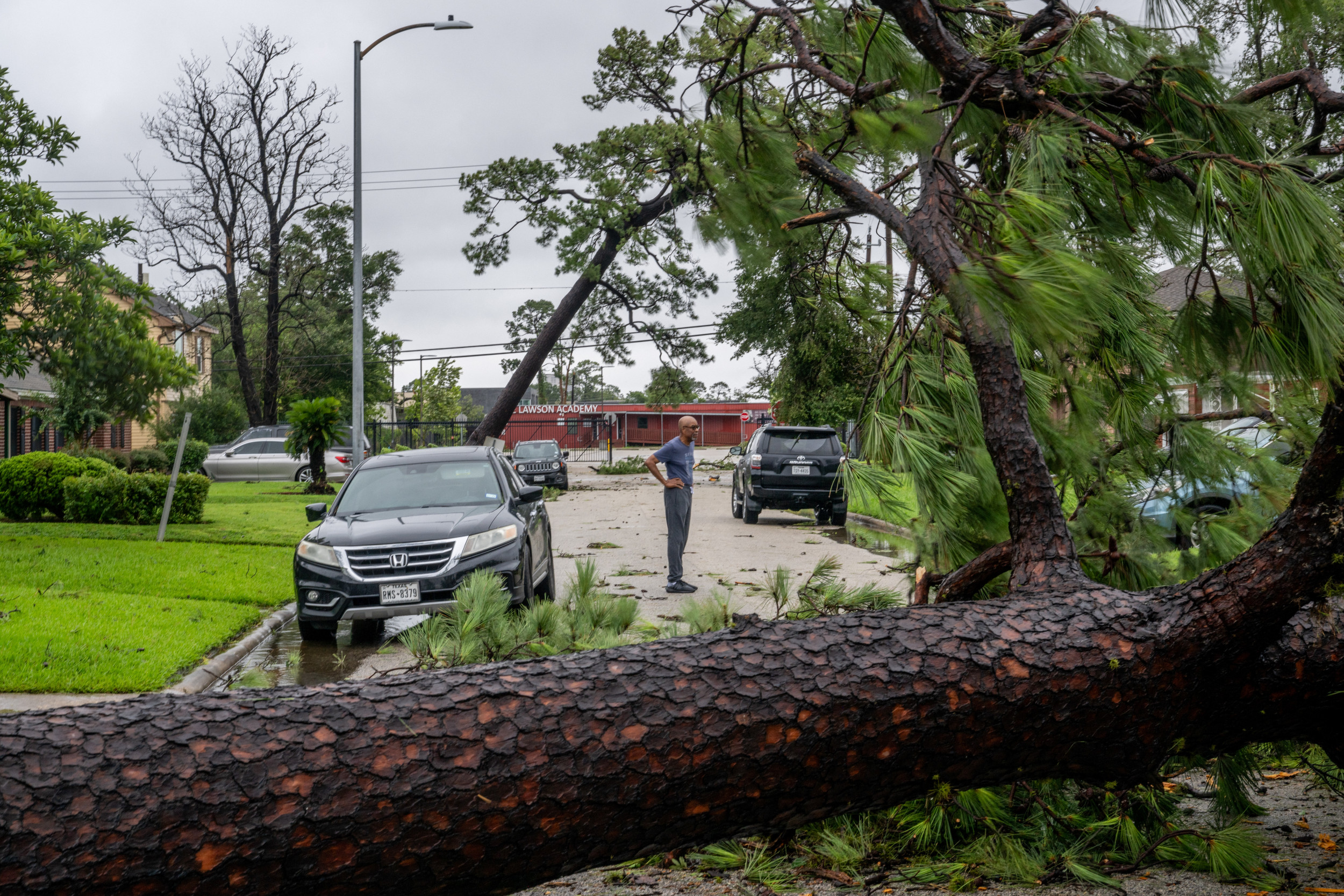Vermont
Storms bring new round of heavy flooding to Vermont with more downpours on the horizon

LYNDON, Vt. (AP) — Vermont’s governor said Wednesday that the latest storm to the hit the state has undone much of the cleanup and recovery work the state has done since its last major bout of flooding only weeks ago, and he called on residents to “stick together” amid reports that more bad weather is on its way.
Thunderstorms brought another round of heavy flooding Tuesday, which caved in and washed away roads, crushed vehicles, pushed homes off their foundations and required at least two dozen boat rescues in northeastern Vermont. Some areas got more than 8 inches (20 centimeters) of rain, which was more than some places had ever gotten in a single day.
More downpours were expected Wednesday, with flash-flooding possible in some already inundated areas, Jennifer Morrison, the commissioner of the Vermont Department of Public Safety, said at a news conference in Berlin, near the state capital, Montpelier. A National Weather Service flood watch was in effect for central and northern Vermont from noon until midnight.
READ MORE: After catastrophic floods, Vermont becomes first state to enact law requiring oil companies to pay for damage from climate change
“This time, it’s especially bad after workers spent the past three weeks working furiously to recover from the last flooding,” Gov. Phil Scott said at the news conference. “It feels much worse than a punch or a kick. It’s simply demoralizing. We have to stick together and fight back against the feeling of defeat.”
This week’s storms have caused destruction, albeit on a smaller scale, like the flooding the state endured in early July that killed two people. As of Wednesday, there were no reported deaths caused by the latest storms, but cars and trucks were smashed and covered in mud, several homes were destroyed and pushed downstream, utility poles and power lines were knocked down, and asphalt roads were washed away.
Weeks after Jason Pilbin watched a driver get swept away by floodwaters, his northeastern Vermont town of Lyndon was ravaged again. He went outside with a flashlight and headlamp around 2:30 a.m. Tuesday to help some neighbors evacuate and then collected their vital medications about 20 minutes before their house broke in half. After that, he woke up another neighbor to help her to leave her home.
Nearly three weeks ago, Pilbin watched helplessly as a man drowned after getting caught while driving through flooding caused by the remnants of Hurricane Beryl. “Unfortunately, I wasn’t able to save him, but I was able to save these” people, he said. “I guess that makes up for some of it. It’s been rough.”
Mark Bosma, a spokesperson for the Vermont Emergency Management Agency, said that swift water rescue teams conducted approximately two dozen boat rescues in the hardest-hit areas overnight Monday into Tuesday. There have been no reports of serious injuries or deaths during this round of flooding.
The governor visited some of the affected areas Tuesday. He posted online that although it feels “demoralizing” to see the damage, “we can’t give up. Now more then ever, I encourage Vermonters who weren’t impacted to find ways to help, because no act is too small. We will get through this together.”
In May, Vermont became the first state to enact a law requiring fossil fuel companies to pay a share of the damage caused by extreme weather fanned by climate change. But officials have acknowledged that collecting any money will depend on litigation against the much-better-resourced oil industry.
Although climate change has its impacts, special calculations are needed to determine exactly how much global warming is to blame, if at all, for any single extreme weather event.
READ MORE: Beryl’s remnants flood Vermont, sweep away apartment building
“The flooding in Lyndonville is just highlighting that climate change is here and the damage is ongoing and oil companies have so far not been required to pay for any of the damage that their product has caused and that needs to shift,” state Sen. Anne Watson said Wednesday, referring to the village of Lyndonville, just south of Lyndon. “The financial burden is increasingly unbearable by Vermonters.”
In St. Johnsbury, Vanessa Allen said she knew rain was possible, but she wasn’t expecting the deluge.
“This is devastating and was completely unexpected,” she said.
Her home was situated between two road washouts, so she was unable to leave. The roads were pockmarked and covered in debris. Nearby, she said, a house had been moved off its foundation and was blocking a road.
“It looks apocalyptic,” she said. “We’re trapped. We can’t go anywhere.”
The state experienced major flooding earlier in July caused by what was left of Hurricane Beryl. The flooding destroyed roads and bridges and inundated farms, and it came exactly a year after a previous bout of severe flooding hit Vermont and several other states.
Vermont has experienced four flooding events in the last year, and a combination of climate change and the state’s mountainous geography are to blame, said Peter Banacos, science and operations officer with the weather service. Greater rainfall has made the state and its steep terrain more susceptible to flooding, he said.
The state’s soil is also getting saturated more frequently, which increases the possibility of flooding, Bancos said.
Vermont’s history of heavily manipulating its rivers and streams also plays a role in increased flooding, said Julie Moore, secretary of the state Agency of Natural Resources. The increase is “a reflection of having reached our limits of being able to truly manage rivers and hold them in place,” she continued.
Roads, bridges, culverts and wastewater facilities are all especially vulnerable The state is in the midst of a multi-decade effort to “replace them or refurbish them with our current and future climate in mind,” Moore said.
Vermont is also working to establish statewide floodplain standards.
“The last storm was a wake-up call,” Lyndonville resident Deryck Colburn said of the flooding earlier this month. “I thought I would never see anything like that again. I don’t think that holds a candle to this. Not even close.”
“There’s a lot of broken hearts,” he added.
Sharp reported from Portland, Maine, and McCormack reported from Concord, New Hampshire. Reporters Patrick Whittle in Maine and Julie Walker in New York also contributed to this story.

Vermont
Shrine Maple Sugar Bowl: Vermont, New Hampshire rosters, streaming info for 2024 game
The 2024 Shrine Maple Sugar Bowl is almost here.
The 71st summer classic is scheduled for Saturday, Aug. 3 at Dave Wolk Stadium on the campus of Vermont State University Castleton. The gridiron showdown between recently graduated all-star seniors from Vermont and New Hampshire is set to kick off at 11:30 a.m.
The Shrine Bowl is played for the benefit of the Shriners Children’s facilities and has raised millions of dollars, according to a news release. The Shrine Maple Sugar Bowl game is one of 30 Shrine games played every year across the country.
Vermont won last summer’s meeting 28-6 to end a three-game losing skid. New Hampshire owns a 50-17-2 lead in the all-time series.
See below for more details on the Shrine game, including rosters for both teams.
How can I watch the 2024 Shrine Maple Sugar Bowl?
The Shrine Maple Sugar Bowl will be streamed for free on online at nsnsports.net. Donations are encouraged at mygiving.net.
Are tickets available to purchase for the 2024 Shrine Maple Sugar Bowl?
Visit ShrineMapleSugarBowl.com for more information on how to purchase tickets online. For a direct link to purchase, visit HERE.
The rosters for the 2024 Shrine Maple Sugar Bowl
Vermont Shrine Bowl roster
BFA-St. Albans: Parker Daudelin, Deagan Rathburn. Bellows Falls: Jesse Darrell, Walker James. Brattleboro: Sam Madow. Burr and Burton: Kaleb Gabert, Jack McCoy, Daniel Scarlotta, Connor Simons, James Wright. Champlain Valley: Ollie Cheer, William Kearney, Brian Rutherford. Colchester: Isaac Karlin. Essex: Max Spaeder. Fair Haven: Trey Lee. Hartford: Andrew Keenan, Ezra Mock, Ryan Spaulding, Brayden Trombly, Brody Tyburski, Cole Withington. Middlebury: Jackson Gillett, Gavin McNulty, Tim Whitney, Jr. Mill River: Mason Boudreau. Mount Abraham/Vergennes: Jamison Couture. Mount Anthony: Carter Thompson. Mount Mansfield: Philip Gulizio, Jr. North Country: Derek Guillette, Watson Laffoon. Otter Valley: Derek Li. Poultney: Tegan Capman. St. Johnsbury: Spencer Hayes, Joe Silver. Spaulding: Gabriel Hoar, Jaquan Johnson-Deering. U-32: Shane Curtain. Windsor: Corey Lockwood, Brody Osgood.
Head coach: Matt Trombly. Assistant coaches: Dan Ammel, Mark Bucklin, Toure Christie, Tom McCoy, Jim Oakman, Chad Pacheco, Tyler Pearce, Tim Porter.
2023 D-I final: Burr and Burton football staves off miraculous Hartford comeback
New Hampshire Shrine Bowl roster
Alvirne: Cameron Porter. Bishop Guertin: Diego Mendes, Joseph Neal. Bow: Sean Nicholls. Exeter: Harrison Caracciolo, Erik Menger. Fall Mountain: Murray Spaulding. Franklin: Ezekiel McCoy, Chris Supry, Steven Supry, Jr. Gilford-Belmont: Gavin Clark, Hutch Haskins. John Stark: Donny White. Kennett: Brody Nagle. Laconia: Keaton Beck. Mascoma: Tyler-Jay Mardin. Merrimack Valley: Nolan Beck. Moultonborough Academy: Connor Adams. Newport: Logan Ash. Pinkerton Academy: Tim Hersom. Plymouth: Tyler Dekutoski, Gabe Kean. Sanborn: Ben Cardoso, Austin Ingersoll. Souhegan: Connor Cassidy, Zachary Wyborney. Spaulding: Kaiden Melendez. Sanborn: Benjamin Rossi. St. Thomas Aquinas: Liam Mathis. Stevens: Tyler Christian. Trinity: Noah Frenette, Bobby Kinsella, Alex Oyaronbi. Windham: Dylan Roy, Seamus Ross.
Head coach: Josh White. Assistant coaches: Kevin Donovan, Lauren Gaudette, Colin McQueen, James Roy, Tim Snow, John Trisciani.
Become a member of the Vermont Varsity Insider Facebook group at https://bit.ly/2MGSfvX.
Contact Alex Abrami at aabrami@freepressmedia.com. Follow him on Twitter: @aabrami5.
Vermont
Vermont man evacuates neighbors during flooding, weeks after witnessing a driver get swept away

LYNDON, Vt. – Weeks after Jason Pilbin witnessed a driver get swept away by floodwaters, his northeastern Vermont community was ravaged again by flooding from heavy rains on Tuesday.
Pilbin went outside with a flashlight and headlamp around 2:30 a.m. to help some neighbors evacuate and then collected their vital medications about 20 minutes before their house broke in half. Then he woke up another neighbor to help her to leave her home, as well.
Nearly three weeks ago, he watched helplessly as a man drowned after getting caught while driving through floodwaters from Hurricane Beryl. “Unfortunately I wasn’t able to save him, but I was able to save these” people, Pilbin said. “I guess that makes up for some of it. It’s been rough.”
Thunderstorms and torrential rain brought another wave of violent floods early Tuesday that caved in and washed away roads, crushed vehicles, pushed homes off their foundations and led to dramatic boat rescues in northeastern Vermont. Some areas got 6 to more than 8 inches (15 to more than 20 centimeters) of rain.
More rain is forecast for central and northern Vermont on Wednesday with the possibility of flash flooding.
Mark Bosma, a spokesperson for the Vermont Emergency Management Agency, said swift water rescue teams in boats conducted approximately two dozen rescues in the dark in the hardest-hit areas late Monday and early Tuesday. There were no immediate reports of serious injuries or deaths for this round of flooding.
The Lyndonville Fire Department staffed its station with its swift water rescue team around 2:30 a.m. and started rescues around 3 a.m., said Chief Jeff Carrow.
The fresh flooding yielded similar scenes of catastrophe as the flooding weeks earlier in which two people died, but on a smaller scale. Cars and trucks were smashed and covered in mud, several homes were destroyed and pushed downstream, utility poles and power lines were knocked down, and asphalt roads yielded to cliffs in spots where roadbeds were carved away.
Police issued a “shelter in place” advisory Tuesday morning for St. Johnsbury, a town of about 6,000 people. At least 5 inches (12.7 centimeters) of rain fell farther north in area of Morgan, which is near the Canada border.
In St. Johnsbury, Vanessa Allen said she knew there was a possibility of rain, but wasn’t counting on the excessive amount.
“This is devastating and was completely unexpected,” she said. “I had no idea this was coming.”
Her home was situated between two road washouts, so she was unable to leave. The roads were pockmarked and covered in debris. Nearby, she said, a house was off its foundation and blocking a road.
“It looks apocalyptic,” she said. “We’re trapped. We can’t go anywhere.”
The state experienced major flooding earlier in July from the tail end of Hurricane Beryl. The flooding destroyed roads and bridges and inundated farms. It came exactly a year after a previous bout of severe flooding hit Vermont and several other states.
Vermont has experienced four flooding events in the last year, due to a combination of climate change and the state’s mountainous geography, said Peter Banacos, science and operations officer with the weather service. Greater rainfall have made the state and its steep terrain more susceptible to flooding, he said.
The state’s soil has also been more frequently saturated, and that increases the possibility of flooding, Bancos said.
Vermont’s history of heavily manipulating its rivers and streams also plays a role in increased flooding, said Julie Moore, secretary of the state Agency of Natural Resources. Increased flooding is “a reflection of having reached our limits of being able to truly manage rivers and hold them in place,” she continued.
Roads, bridges, culverts and wastewater facilities are all especially vulnerable, Moore said. The state is in the midst of a multidecade effort to “replace them or refurbish them with our current and future climate in mind,” Moore said.
Vermont is also working to establish statewide floodplain standards.
“The last storm was a wake-up call,” Deryck Colburn said of the flooding earlier this month. “I thought I would never see anything like that again. I don’t think that holds a candle to this. Not even close.”
“There’s a lot of broken hearts,” he added.
__
Sharp reported from Portland, Maine. McCormack reported from Concord, New Hampshire. Reporters Patrick Whittle in Maine and Julie Walker in New York also contributed to this story.
Copyright 2024 The Associated Press. All rights reserved. This material may not be published, broadcast, rewritten or redistributed without permission.
Vermont
What caused such a sudden rush of torrential rain in Vermont? – The Boston Globe

Sometimes heavy rain events are widespread and sometimes they’re more localized. Either way, they can cause tremendous amounts of damage, ranging from major to even catastrophic. Last night and early Tuesday, one of these localized heavy rain events went through a small area of the Northeast Kingdom of Vermont.
The torrential rain was caused by an unusually well developed low-pressure area that had a lot of moisture and was moving slowly. This combination of high precipitable water — the amount of moisture available in the atmosphere — the slow movement of the storm system and probably even some topographical enhancement all contributed to dumping anywhere from 5 to 8 inches of rain in a short amount of time.
Notice how fast the Passumpsic River rose and then started to fall due to the heavy rain. This is why flash flooding is so dangerous.

When you receive this much rain in such a limited amount of time, it overwhelms streams, rivers and catch basins and the water has no place to go.
This is why flash flood warnings end up being issued and why damage can occur really fast.
Some scientists are calling this devastating flooding a 1-in-1,000-year event, but it’s not that simple.
Last night’s rain in VT had a 1 in 1,000 statistical probability of occurring. There is a 0.1% chance of that event occurring in any given year, but you don’t have to wait 1,000 years between them. You could even have these events in back-to-back years or even two in one year.
In the graphic below, the curved line marks a hypothetical list of all possible extreme rainfall events, with the caveat that the total area under the curved line must equal 1.0 or 100%. The percent chance of any single rain event being more than a specific amount is the percent of the total area to the right of that rainfall amount. The percent chance of a rain event less than or equal to that threshold can be found by subtracting the area to the right of the threshold from 100.

This recent event is being compared to some other big Vermont flooding events as far back as the 1920s and as recently as 2011, when the remnants of Hurricane Irene brought devastation to many of Vermont’s covered bridges. Those events were the type that impacted many more people and were not so localized.

There are more chances of rain in the forecast for much of New England, including the Northeast Kingdom of Vermont. On Wednesday, a more widespread area of showers is likely to develop and I suspect at least some appreciable precipitation will occur.

There is the chance for more downpours, but it’s highly unlikely we will see a repeat of Tuesday morning’s event. Nevertheless, any additional rainfall will be unwelcome.

Lastly, while individual events like what we saw this morning are just simply weather in a warming climate, these events are forecast to become more frequent.
Indeed there has been a notable uptick in heavy precipitation events worldwide and the Northeast is likely to experience both localized micro events and more widespread flooding events in the coming decades.

-

 Politics1 week ago
Politics1 week agoManchin considers re-registering as Democrat to run for president
-

 News1 week ago
News1 week agoHow the Trump Rally Gunman Had an Edge Over the Countersnipers
-

 Politics1 week ago
Politics1 week agoTop five moments from Secret Service director's hours-long grilling after Trump assassination attempt
-

 News1 week ago
News1 week agoMayorkas names panel to conduct review of Trump assassination attempt
-

 World1 week ago
World1 week agoThousands in Mallorca demand 'less tourism, more life'
-

 News1 week ago
News1 week agoVideo: Secret Service Director Faces Bipartisan Calls to Resign
-

 News1 week ago
News1 week agoGeorge Clooney Endorses Kamala Harris, Says Biden Is ‘Saving Democracy’
-

 News1 week ago
News1 week agoTrump faces a tighter race with Kamala Harris set to replace Biden, experts say















